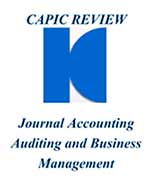Intellectual capital and integrated accounting in the context of ISSB IFRS-S1
Published 2024-06-18
Keywords
- intellectual capital,
- integrated accounting,
- sustainability reports
How to Cite
Copyright (c) 2024 Cecilia Ficco, Gustavo Sader

This work is licensed under a Creative Commons Attribution-NonCommercial-ShareAlike 4.0 International License.
Abstract
The purpose of this essay is to reflect on and provide the authors’ point of view on the future of intellectual capital (IC) information and the role that integrated accounting could assume under the new corporate reporting format proposed by IFRS S1 of the International Sustainability Standards Board (ISSB). In order to comply with said objective, it starts from the conceptualization of the IC and its importance for sustainability, to later show how it is evidenced within the integrated report (IR) of the International Integrated Reporting Council. Next, aspects related to integrated thinking and IC in IFRS S1 are analyzed, to culminate with some technical and epistemological contributions to integrated accounting, as a concept that surpasses IR. Thus, we arrive at the proposal of a risk matrix that implies a new vision of integrated accounting, in which IC dynamics and risk management are integrated, relating management accounting with the disclosure of information and with the control of sustain-ability risks.
Downloads
References
- Abhayawansa, S., Guthrie, J. & Keynes, M. (2019). Intellectual capital accounting in the age of integrated reporting: a commentary. Journal of Intellectual Capital, 20(1), 2–10.
- Alvino, F., Di Vaio, A., Hassan, R., & Palladino, R. (2021). Intellectual capital and sustainable development: a systematic literature review. Journal of Intellectual Capital, 22(1), 76–94.
- Arroyo, J., Bousoño C., y Martinez S. (2011). Generación de valor y mitigación de riesgos a través de la sostenibilidad y la gestión responsable: el caso de Abengoa. Ambienta, 94, 112-119.
- Badia, F., Dicuonzo, G., Petruzzelli, S., & Dell’Atti, V. (2019). Integrated reporting in action: mobilizing intellectual capital to improve management and governance practices. Journal of Management and Governance, 23(2), 299–320.
- Bombón, D., y Pacheco, F. (2021). Marco de gestión integral de riesgos, elemento necesario en el sector cooperativo financiero. Bolentín de Coyuntura, 31, 34-44.
- Bontis, N. (1999). Managing organizational knowledge by diagnosing intellectual capital. International Journal of Technology Management, 18 (5-8), 433-462.
- Busco, C., Malafronte, I., Pereira, J., & Starita, M. (2019). The determinants of companies’ levels of integration: does one size fit all? The British Accounting Review, 51(3), 277–298.
- Cañibano, L., Sánchez, M. García, M., y Chaminade, C. (2002). Directrices para la gestión y difusión de información sobre intangibles. Proyecto Meritum. Madrid.
- COSO (2017). Enterprise Risk Management Integrating with Strategy and Performance. Committee of Sponsoring Organizations of the Treadway Commission.
- De Villiers, C., La torre, M., & Molinari (2022). The Global Reporting Initiative’s (GRI) past, present and future: critical reflections and a research agenda on sustainability reporting (standard-setting). Pacific Accounting Review, 34(5), 728–747.
- De Villiers, C., & Sharma, U. (2020). A critical reflection on the future of financial, intellectual capital, sustainability and integrated reporting. Critical Perspectives on Accounting, 70, 101999.
- Dey, P. (2020). Value relevance of integrated reporting: a study of the Bangladesh banking sector. International Journal of Disclosure and Governance, 17(4), 195–207.
- Dumay, J. (2016). A critical reflection on the future of intellectual capital: from reporting to disclosure. Journal of Intellectual Capital, 17(1), 168–184.
- Edvinsson, L., & Malone, M. (1997). Intellectual Capital. Realizing your company´s true value by findings its hidden brainpower. New York: Harper Collins Publishers.
- Ficco, C. y Prieto, M. B. (2021). El capital intelectual: factor clave en la relación empresa-sociedad-sostenibilidad. Revista de la Asociación Española de Contabilidad y Administración de empresas (AECA), 135, 13-15.
- Giner, B., & Luque, M. (2022). A commentary on the ‘new’ institutional actors in sustainability reporting standard-setting: a European perspective”. Sustainability Accounting, Management and Policy Journal, 13(6), 1284–1309.
- IFRS Foundation. (2021). Management Commentary. London: IFRS Foundation. Disponible en: https://www.ifrs.org/content/dam/ifrs/project/management-commentary/ed-2021-6-management-commentary.pdf
- IIRC (2013). The International IR Framework. International Integrated Reporting Council.
- ISSB (2023). NIIF S1 General Requirements for Disclosure of Sustainability-related Financial Information. International Sustainability Standards Board.
- ISSB (2023). ISSB issues inaugural global sustainability disclosure standards. Disponible en: https://www.ifrs.org/news-and-events/news/2023/06/issb-issues-ifrs-s1-ifrs-s2/
- Pigatto G., Cinquini, L., Dumay, J., & Tenucci, A. (2022). A critical reflection on voluntary corporate non-financial and sustainability reporting and disclosure. Journal of Accounting & Organizational Change, 19(2), 250-278.
- Roos, G., Roos, J., Dragonetti, N., y Edvinsson, L. (2001). Capital Intelectual. Bs. Aires: Paidós.
- Sader, G., Ficco, C. y García, G. (2021). Abordaje del capital intelectual y la sostenibilidad. Hacia una contabilidad multidimensional e integrada. CAPIC Review, 19, 1–12.
- Soriya, S., & Rastogi, P. (2021). A systematic literature review on integrated reporting from 2011 to 2020. Journal of Financial Reporting and Accounting, 20(3-4), 558-579.
- Stewart, T. (1997). Intellectual Capital: The New Wealth of Organizations. New York: Doubleday.
- Van der Zahn, J. (2023). Sustainability reporting regime transition and the impact on intellectual capital reporting. Journal of Applied Accounting Research, 24(3), 544-582.
- Youndt, M., Subramaniam, M., & Snell, S. (2004). Intellectual capital profiles: an examination of investments and returns. Journal of Management Studies, 41(2). 335–361.



































